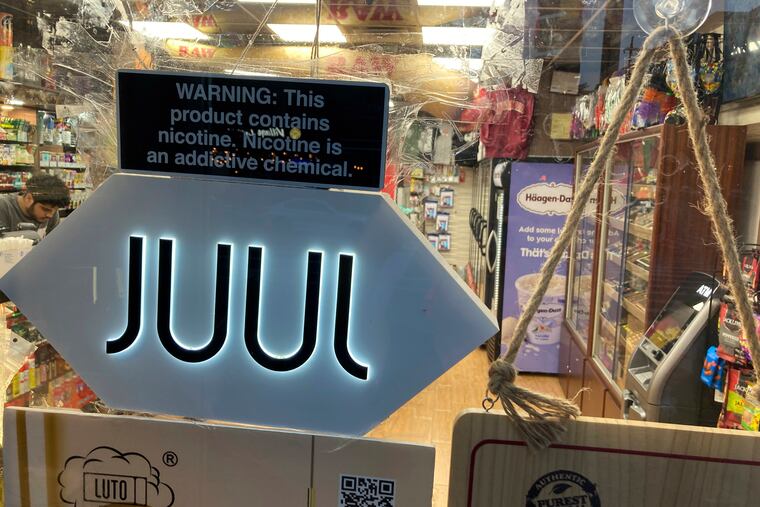Vaping is an epidemic among young people. Here’s how to address it.
As health departments determine how best to use settlement funds from Juul to prevent and treat teen vaping, they must understand one important fact: Not all teens are equally at risk.

Among young people, vaping has become an epidemic. In 2021, approximately two million middle and high school students said they were currently using e-cigarettes.
While some users may believe vaping is safer than smoking, most vapes contain nicotine, which is addictive and can harm young brains.
E-cigarette company Juul Labs recently agreed to pay $438.5 million in a settlement with many U.S. states and Puerto Rico as a result of an investigation into its aggressive marketing to young people, which has contributed to the youth vaping epidemic.
This settlement helps, but the task to undo the damage by Juul and other e-cigarette makers that have entered the market in recent years will be daunting.
As health departments embark on the long road to determine how best to use these Juul settlement funds to prevent and treat teen vaping, they must understand one important fact: Not all teens are equally susceptible to e-cigarette use.
We recently conducted a national study with more than 38,000 U.S. high school students and found some striking patterns. For instance, among girls of color who identified as lesbian, e-cigarette use was significantly higher: 18.2% of Black girls who identified as lesbian vs. 7.1% of Black girls who identified as heterosexual.
However, this pattern was reversed among white girls, such that white heterosexual girls used e-cigarettes at higher rates than their lesbian or bisexual peers. This same reversal was present among boys; white and Black boys who identified as gay or bisexual tended to have lower rates of vaping than their heterosexual peers.
As public health researchers who study vaping and tobacco use among young people, we are concerned that differences in vaping rates among youth may lead to long-term health disparities including lung disease, nicotine addiction, and higher rates of cigarette smoking. We are particularly worried about the increase in vaping among traditionally marginalized people such as young Black lesbians, as LGBTQ adults are more likely to smoke and suffer from higher burden of health problems related to cigarettes than non-LGBTQ people.
Why do these disparities in vaping occur in the first place?
Again, we go back to advertising. E-cigarette makers such as Juul and other competitors have often targeted their marketing to LGBTQ people, including placing advertisements and promotions in LGBTQ venues or events. For example, e-cigarette maker VaporFi sponsored the Pride Festival in Miami. In one study of more than 9,000 U.S. young adults, 61.5% of young women who identified as bisexual and Black said they had seen e-cigarette advertisements in the past year, compared with 39% of white heterosexual young women.
This creates a vicious cycle. LGBTQ youth are more likely to have friends who vape, then they may start using e-cigarettes as a way to socialize and feel a sense of belonging.
The stress of being marginalized may also lead some LGBTQ youth to use e-cigarettes to cope. Indeed, one study found that LGBTQ youth who experience bullying in school and online were more likely to use cigarettes and e-cigarettes.
These data show that cities using the Juul settlement money to reduce youth vaping must take a targeted approach in order to reach the youth who need it most. The approach must also be multipronged, involving parents, schools, and policymakers.
Parents can monitor their child’s behavior (look for coughing, mood swings, mouth sores), set rules (e.g., curfews, smoking rules), and talk to their child about the potential harm of e-cigarette use. Schools should enforce strict rules to detect and address vaping and provide education to debunk misperceptions that e-cigarettes are harmless.
Local, state, and national policymakers should implement sales and marketing restrictions to restrict youth access, eliminate the sale of flavored e-cigarette products that appeal to youth, and regulate disposable e-cigarette brands such as Puff Bar, which have become increasingly popular.
Juul’s settlement is only the first step in providing health departments with funding to address the youth vaping epidemic. Now the difficult work begins.
Juhan Lee is a research fellow in the department of psychiatry at the Yale School of Medicine and the Yale Tobacco Center of Regulatory Science. Andy Tan is a senior fellow at the Leonard Davis Institute of Health Economics and an associate professor at the Annenberg School for Communication at the University of Pennsylvania.